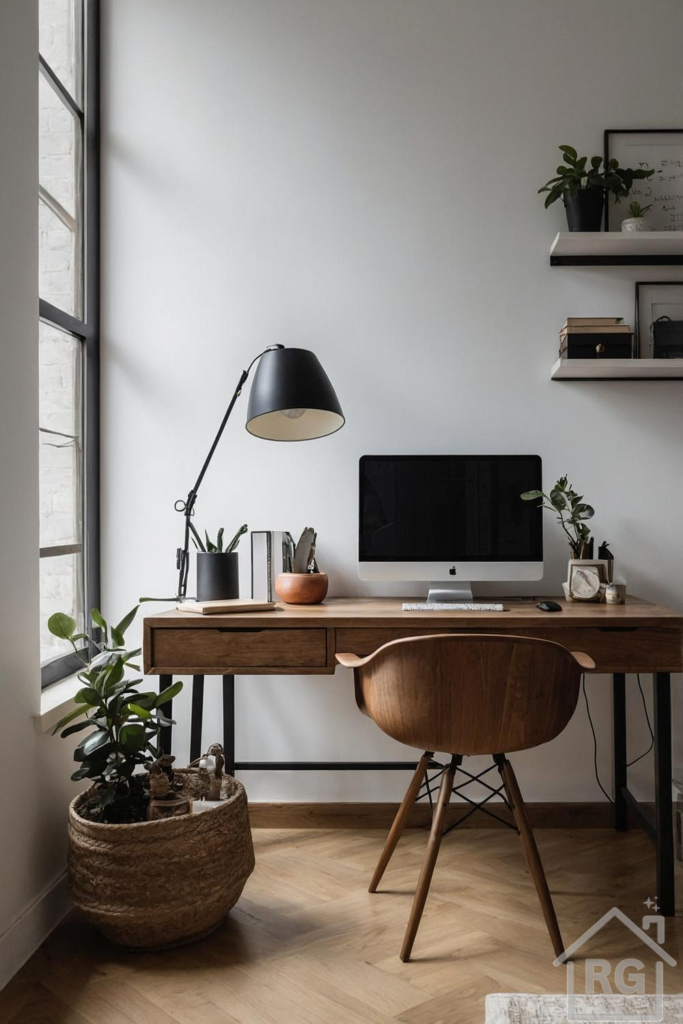
(Color Palette Disclaimer: The color palette referenced here is approximate and may vary based on screen settings and printing methods. Always test paint swatches and fabrics in your space before making final decisions.)
(Affiliate Disclosure: Some of the links in this post may be affiliate links, which means I may earn a small commission if you make a purchase through them—at no extra cost to you. Thank you for supporting my work and helping me continue to provide free content!)
Why Choose a Minimalist Home Office?
Creating a minimalist home office can transform your workday by reducing distractions, boosting focus, and elevating your mood. A streamlined workspace centered on neutral tones, natural textures, and purposeful design fosters clarity and productivity.
Essential Elements of a Minimalist Workspace
- Simple desk with clean lines
- Ergonomic chair in natural wood or muted tones
- Task lighting with a matte finish
- Subtle decorative accents (plants, small art)
- Hidden storage to eliminate clutter
Step-by-Step Design Tips
Follow these practical steps to recreate the look in your own home:
1. Choose a Neutral Color Palette
Select a base of crisp white walls paired with warm wood tones and black accents for contrast. Use green from indoor plants to add a refreshing pop of color without overwhelming the senses.
2. Invest in Quality Furniture
Opt for a solid wood desk with a minimalist silhouette and sturdy legs. Pair it with an ergonomic chair featuring gentle curves and natural wood legs for comfort and style.
3. Layer Textures for Visual Interest
- Place a woven basket planter on the floor
- Choose ceramic or matte metal planters on the desk
- Add a small fabric rug underfoot
4. Optimize Lighting
Position your desk near a window for ample natural light. Supplement with a sleek adjustable desk lamp in matte black for task lighting during late hours.
5. Keep Clutter Out of Sight
Use slim floating shelves to display only a few meaningful items. Store paperwork and accessories in closed drawers or decorative boxes to maintain a tidy surface.
6. Incorporate Greenery
Introduce low‑maintenance plants like snake plants or pothos to purify air and inject life into your workspace. A large floor plant in a woven basket anchors the design.
Finishing Touches
Add a few curated décor pieces—a simple clock, a minimal art print, or a small sculpture—to personalize without cluttering. Maintain a consistent aesthetic by sticking to a cohesive palette and material selection.
Conclusion
Designing a minimalist home office doesn’t require expensive purchases or major renovations. By focusing on functionality, neutral colors, and natural textures, you can create a calm, productive workspace that inspires creativity every day.
